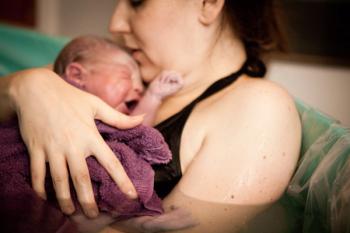
Aromatase inhibitors in breast cancer linked to bone fracture risk
An expert statement updates fracture prevention strategies for postmenopausal women with breast cancer receiving aromatase inhibitor therapy.
A joint position statement from experts in multiple medical groups has highlighted the risk of fracture because of aromatase inhibitor–associated bone loss (AIBL) in women with breast cancer receiving endocrine therapy.1
The statement includes recommendations for osteoporosis specialists and oncologists, updating those provided in 2017. It includes new data from clinical trials, systematic reviews, and meta-analyses, alongside an evidence-based treatment algorithm to determine fracture risk and provide therapy to women at risk of AIBL.1
“The significant negative impact that aromatase inhibitors and other breast cancer therapies can have on bone health in postmenopausal women reinforces the need for clear strategies to routinely assess and appropriately treat this patient group alongside their primary disease management,” said Peyman Hadji, MD, lead study author and professor at Marburg University in Germany.1
Updated literature review and methodology
Relevant studies from 2016 to 2024 were identified through searches of PubMed, Medline, and other databases.2 Additionally, investigators collected data from abstracts presented at international meetings. The optimal time to initiate treatment, treatment type and duration, and follow-up practices were determined using an evidence-based medicine approach.
Multiple breast cancer therapies have been associated with bone loss. However, investigators reported that tamoxifen has no negative impact on bone mineral density (BMD) or fracture risk in postmenopausal women despite an established risk in premenopausal women.2
A greater risk of fracture has also been noted from aromatase inhibitors (AI) vs tamoxifen, despite the former now being more commonly prescribed in patients with breast cancer. This risk is influenced by multiple underlying risk factors, such as poor nutrition, age, low body mass index, a family history of osteoporosis, physical inactivity, and chronic corticosteroid treatment.2
Evidence on fracture risk
In Taiwan, a population-based cohort study of women aged 20 to 39 years with breast cancer highlighted increased fracture risks among those treated with AI, radiotherapy, or monoclonal antibodies. In patients using AI for more than 180 days, the hazard ratio for fracture was 1.77.2
Additionally, a 2-fold to 4-fold increase in bone loss from AIBL has been highlighted in postmenopausal women with hormone-sensitive breast cancer vs a normal postmenopausal BMD decrease. In a meta-analysis, a relative risk (RR) of 1.18 was reported for nonvertebral fractures in breast cancer patients using AI vs those not using AI.2
The RR for vertebral fractures in these patients was 1.84. These figures highlight significantly increased risks of both nonvertebral and vertebral fractures linked to AI use.2
According to the statement, fracture risks are also increased by a longer duration of AI use. In a systematic review and meta-analysis, an odds ratio of 1.34 was reported for fracture risk in patients with longer treatment using AI. Another study reported an RR of 1.59 for low-energy fractures in patients with increased AI exposure, as well as an RR of 1.53 for osteoporosis.2
Identifying patients for antiresorptive therapy
Investigators also highlighted the importance of identifying breast cancer patients needing antiresorptive therapies to reduce the risk of bone events. The statement continues the 2017 recommendation of determining fracture risk in women with breast cancer through BMD T-scores using a dual-energy x-ray absorptiometer.2
However, the need for multiple approaches to assess bone fracture risk was also discussed. This claim was supported by a cross-sectional study of women with estrogen receptor–positive early breast cancer.2
In the trial, the rate of radiological vertebral fractures was 31.2% in patients treated with AI vs 18.9% in those who did not receive AI. Notably, this association was not influenced by BMD values during the adjuvant AI treatment.2
Prevention and patient awareness
Overall, investigators stated women receiving AI treatment should be aware of associated fracture risks. Additionally, the statement recommends preventive measures such as exercise and optimal calcium and vitamin D intake.2
“This updated position statement reflects the latest combined thinking on fracture and risk assessment in postmenopausal women with breast cancer who are receiving adjuvant aromatase inhibitor therapy and summarizes the most suitable treatment modalities and an ideal treatment algorithm for the management of AIBL,” said Hadji.1
References
- New guidance on the management of aromatase inhibitor-associated bone loss in women with hormone-sensitive breast cancer. News release. International Osteoporosis Foundation. August 18, 2025. Accessed August 20, 2025. https://www.eurekalert.org/news-releases/1095007
- Hadji P, Aapro M, Al-Dagri N, et al. Management of aromatase inhibitor-associated bone loss (AIBL) in women with hormone-sensitive breast cancer: an updated joint position statement of the IOF, CABS, ECTS, IEG, ESCEO, IMS, and SIOG. J Bone Oncol. 2025;53:100694. doi:10.1016/j.jbo.2025.100694
Newsletter
Get the latest clinical updates, case studies, and expert commentary in obstetric and gynecologic care. Sign up now to stay informed.











